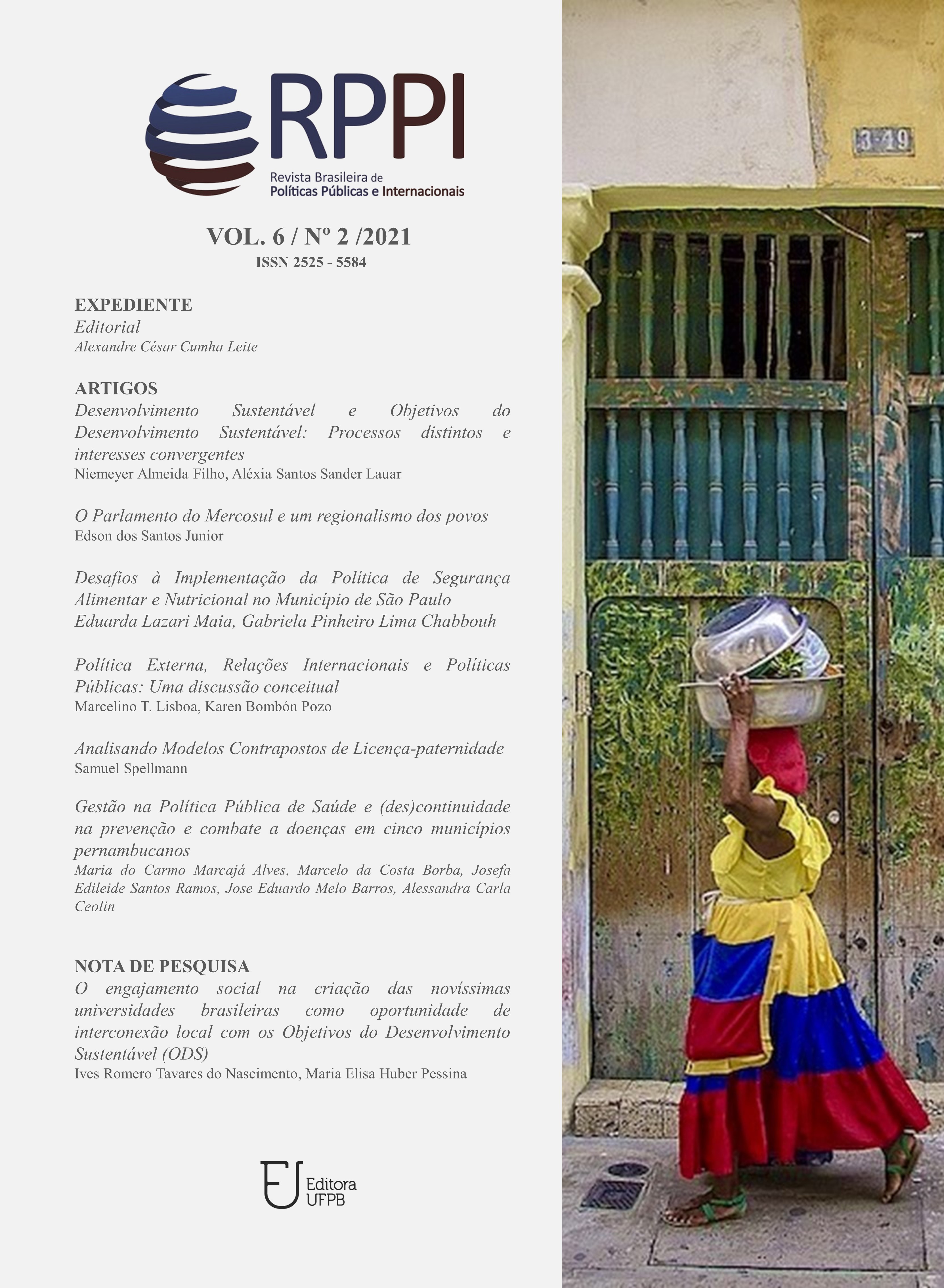Analyzing Contending Models of Paternity Leave:
A Critical-comparative Approach Centered in the Non-transferable Exclusive License Model
DOI:
https://doi.org/10.22478/ufpb.2525-5584.2021v6n1.52114Keywords:
Paternity Leave; Non-transferable Exclusive License Model, Sweden, Denmark, Parental LeaveAbstract
This article presents a critical-comparative analysis between paternity, maternity and parental leave models in Sweden and Denmark. We do this in order to inform the reader about the current discussions on the possible models for implementation of paternity leave, aiming on feeding the legislative and academic debate in Brazil, even though we recognize the current socioeconomic reality, in which structural counter-reforms on Social Security takes place, and while a Capital Crisis is unfolding. First, we present an outlook about parental leave legislation in both Scandinavian nations. Afterwards, a comparative analysis is established between the Swedish and the Danish models. The article justifies the choice for the analysis of both paradigms by pointing out the mutually opposed characteristics these models encompass, and by the derivations that took place after the implementation of austerity policies through paternity leave legislation at these countries. The article takes pays especial attention at the Non-transferable Exclusive License Model and its consequences for the widening of the utilization of paternity leave in Sweden. In addition, through the study of the Danish Model, we demonstrate the intrinsic connection between not paying in full parental leave benefits and the statistic lesser use by male adopters and genitors of this social right.
Downloads
Downloads
Published
Issue
Section
License
Copyright (c) 2020 Samuel Spellmann

This work is licensed under a Creative Commons Attribution 4.0 International License.
Autores que publicam nesta revista concordam com os seguintes termos:- Autores mantém os direitos autorais e concedem à revista o direito de primeira publicação, com o trabalho simultaneamente licenciado sob a Licença Creative Commons Attribution que permite o compartilhamento do trabalho com reconhecimento da autoria e publicação inicial nesta revista.
- Autores têm autorização para assumir contratos adicionais separadamente, para distribuição não-exclusiva da versão do trabalho publicada nesta revista (ex.: publicar em repositório institucional ou como capítulo de livro), com reconhecimento de autoria e publicação inicial nesta revista.
- Autores têm permissão e são estimulados a publicar e distribuir seu trabalho online (ex.: em repositórios institucionais ou na sua página pessoal) a qualquer ponto antes ou durante o processo editorial, já que isso pode gerar alterações produtivas, bem como aumentar o impacto e a citação do trabalho publicado (Veja O Efeito do Acesso Livre).




_.jpg)






.png)


.jpg)
_.png)
